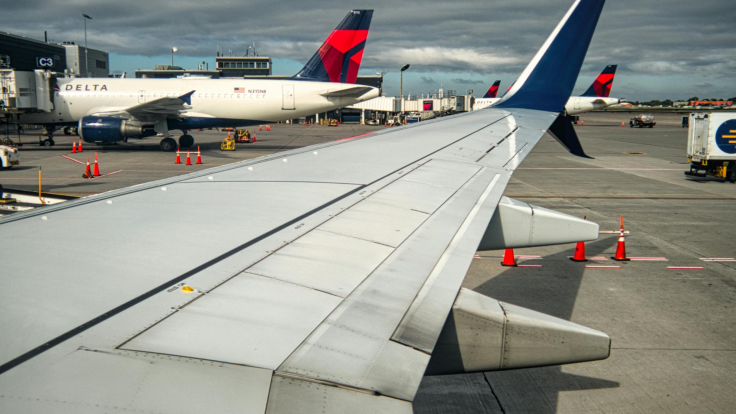Air Traffic Blunder? Two Delta Jets SLAM Together at LaGuardia Airport, With a Wing Ripping Into the Cockpit Window
Delta planes crash into each other at LaGuardia, prompting probe after wing slices cockpit glass.

Chaos unfolded at New York's LaGuardia Airport on 1 October 2025 when two Delta Connection regional jets collided on a taxiway, tearing through the cockpit windshield of one aircraft.
The incident left a flight attendant with minor injuries and forced the Federal Aviation Administration (FAA) to open an investigation into how two planes made contact on the ground at one of America's most congested airports.
What Happened on the Ground
The collision occurred during peak evening traffic. According to the FAA, one Endeavour Air-operated aircraft clipped the nose of another at low speed, sending a jolt through the cabins.
Passengers reported shock, but no serious injuries were reported. Emergency responders treated one flight attendant for minor wounds. Both planes were towed away for inspection and grounded pending safety checks.
The only confirmed injury was to a flight attendant, who was treated for minor, non-life-threatening wounds.
Delta and FAA Response
Delta apologised to customers, saying: 'The safety of our customers and crew is our highest priority.'
Emergency crews evacuated passengers and rebooked them on new flights.
The FAA confirmed a formal probe is underway, focusing on air traffic control communications, pilot actions, and ground handling procedures. Investigators are expected to examine whether human error, miscommunication, or technical issues caused the collision.
LaGuardia's Congested Conditions
LaGuardia Airport, located in Queens, New York, is known for its heavy congestion and limited infrastructure.
Serving more than 30 million passengers annually, the airport has short runways and narrow taxiways compared to larger hubs. Although a multi-billion-dollar renovation has modernised its terminals, aviation experts note that ground movements remain complex, particularly during peak traffic periods.
Ground collisions are rare but not unheard of in US aviation. FAA data shows dozens of ground incidents each year across the country, most involving low-speed contact between wings and fuselages. While such collisions typically result in damage and delays rather than fatalities, they highlight vulnerabilities in ground safety management at crowded airports.
Past Incidents and Wider Concerns
This is not the first time LaGuardia has seen ground mishaps. In 2015, two planes clipped wings while taxiing, and similar incidents have been reported at nearby JFK International Airport. Analysts argue that limited space and constant flight activity make New York airports particularly prone to these low-speed scrapes.
Experts say the latest collision may renew calls for improved ground radar systems and collision-avoidance technologies that can better assist pilots and controllers in high-density environments. 'These kinds of incidents are a reminder that bottlenecked airports are as much about ground safety as air safety,' one aviation consultant told U.S. media.
Impact on Passengers and Next Steps
Despite the collision, LaGuardia operations continued with only minor delays. Delta confirmed all affected travellers were rebooked and offered compensation for the inconvenience. Some passengers described the experience as alarming but credited cabin crews for remaining calm and professional.
The FAA's investigation is expected to take several weeks, after which findings may lead to updated guidance on ground operations. Depending on the outcome, the inquiry could result in new safety recommendations for LaGuardia and potentially for other crowded U.S. airports facing similar risks.
© Copyright IBTimes 2025. All rights reserved.



















